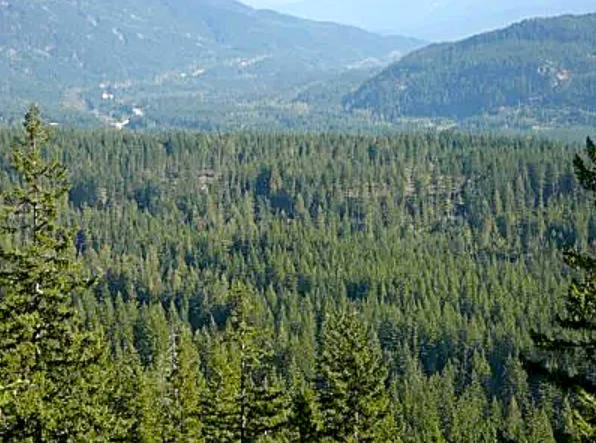The Dungate Community Forest is emphasizing community involvement, recreation and wildfire prevention in its bid to increase its annual allowable cut.
Appearing before council this month, a community forest representative stressed a united approach will be key to having its application to forests, lands, natural resource operations and rural development minister Doug Donaldson be successfully considered.
It’s proposing adding lands immediately adjacent to the District of Houston reaching south to include the current Morice Mountain Recreation Area.
That would give the community forest the ability to increase its annual allowable cut from the current 29,000 cubic metres a year to 44,000 cubic metres a year.
Logging within the Morice Mountain Recreation Area would be done selectively by preserving recreation values, working within small openings and doing partial cutting in areas.
“Conventional forest practices in this area will not work,” a written presentation to council stated.
The area between the District and the recreation area, approximately 4,000 hectares in size, contains high wildfire risk hazards but also has a high potential for more recreation development, the presentation continued.
It’s also in close proximity to private land and there’s a “strong desire to have a voice in management,” it added.
Overall, the presentation cited resulting benefits of economic diversification while keeping a working forest in place — reaffirming the foundation for the provincial government to create communiy forests in the first place.
There would also be increased employment per meter cut through smaller-scale harvesting practices.
And by including recreation values within its operating procedures, tourism would be boosted, recreation clubs would have the ability to develop infrastructure and the overall appeal of more recreation would attract new residents.
In outlining the “why” foundation of an eventual expansion application, the written presentation listed an economic need and areas requiring special management.
“Our ask is not greedy,” the presentation stated. “Even with this area increase we would still be behind adjacent timber supply in terms of percentage of cut allocated to community forests.”
Next steps toward an application involve an open house, contact with First Nations and stakeholders and preparing a brochure.
Formed in 2008 and 99 per cent owned by the District of Houston, wood from the community forest goes to the Canfor mill.
Profits from the business are returned to the community in the form of grants for non-profit groups for a wide variety of activities.
That fits with the intent behind community forests of providing a revenue stream that’s under local control.
As the majority owner of the community forest, the District of Houston has also been lobbying for an increase, emphasizing that more local control of logging is needed following the closure by West Fraser in 2014 of Houston Forest Products, resulting in the loss of more than 200 jobs.
It’s also been developing a long-term regional recreation vision, something that could be incorporated into the workings of the community forest.
To date the forests ministry has been less than receptive of the idea of adding more wood to the community forest.
“Expansions to community forests are only available when there is available volume within a timber supply area,” the ministry said in a prepared statement late last year. “There is no volume available in the Morice or Lakes timber supply areas for additional tenure opportunities or expansions.”
And it has also rejected, so far, the prospect of including Crown lands adjacent to the community which could be cleared to lessen the risk of wildfires affecting built up areas.
That would, in effect, increase the volume of wood available to the community forest.
